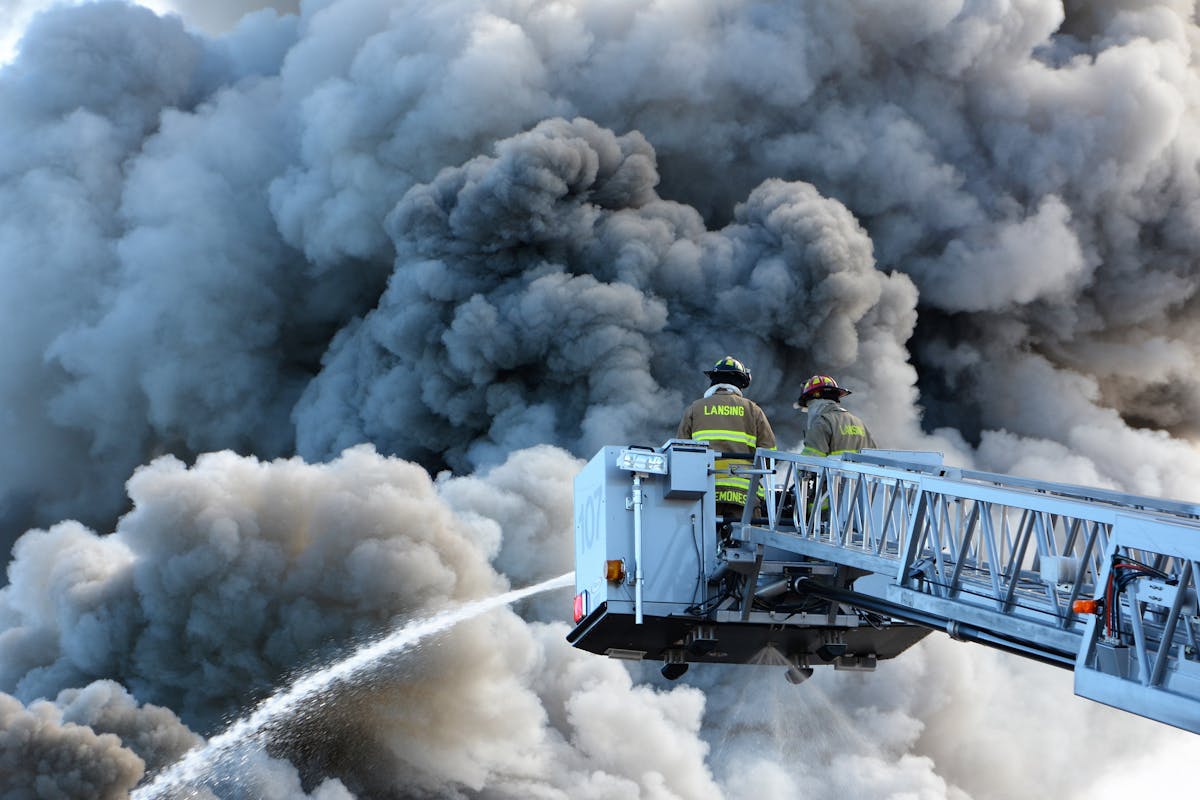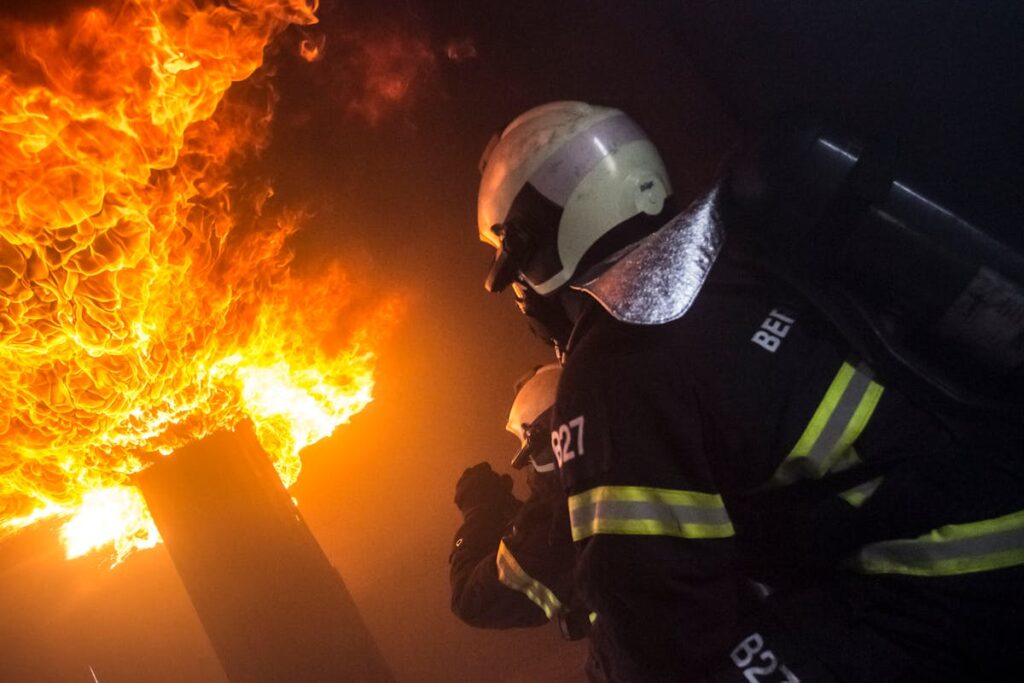Throughout history, numerous fatal crashes and disasters have played pivotal roles in reshaping safety standards worldwide. From the maritime catastrophe of Titanic to the aviation tragedy at Tenerife Airport, each incident has precipitated significant advancements in design, communication, and safety protocols. As we analyze these horrific yet transformative events, it’s imperative to understand their impact, the lessons learned, and how these tragedies have subsequently reshaped safety measures across various industries. This exploration may uncover whether history repeats itself or if humanity has indeed learned from its past mistakes.
Titanic’s Tragic Voyage
Amidst the annals of maritime history, the Titanic’s tragic voyage stands as a stark reminder of human hubris and the relentless might of nature. Despite being touted as “unsinkable”, the colossal ship met its untimely demise on its maiden voyage in 1912, leading to the loss of over 1,500 lives.
The Titanic’s legacy is twofold. One aspect lies in the enduring fascination with its dramatic saga, which continues to fuel books, films, and research. The other, perhaps more significant, is its profound impact on maritime safety. The disaster sparked outrage and a swift revision of safety protocols. International Ice Patrol was established to monitor icebergs in the North Atlantic, and the first International Convention for the Safety of Life at Sea was held in 1914, resulting in stringent safety measures such as sufficient lifeboats for all passengers and mandatory lifeboat drills.
In the wake of the Titanic catastrophe, the world witnessed a paradigm shift in attitudes towards marine safety. The story of Titanic, while tragic, served as a catalyst for significant improvements in maritime safety protocols, forever shaping the way we approach sea travel.
Hindenburg Airship Disaster
Marking a significant turning point in aviation history, the Hindenburg Airship Disaster of 1937 stands as a chilling reminder to the dangers of hydrogen-filled airships. The Hindenburg, a German passenger airship, experienced a catastrophic failure while attempting to dock at Naval Air Station Lakehurst in Manchester Township, New Jersey. The conflagration, captured on film, resulted in 36 fatalities and effectively ended the era of passenger airships.
The Hindenburg legacy is a reflection of the inherent risks of early airship technology. Built by the Zeppelin Company, the Hindenburg was the largest airship ever constructed and was filled with hydrogen due to the United States’ control of helium reserves. This decision, however, would prove fatal. Upon approach to Lakehurst, the Hindenburg suddenly burst into flames, with the hydrogen gas acting as an accelerant.
The disaster prompted a reevaluation of airship technology, leading to a shift away from hydrogen in favor of safer alternatives. Despite the tragedy, the Hindenburg’s legacy also includes advances in navigation and weather forecasting, instrumental components of modern aviation. The Hindenburg Airship Disaster consequently symbolizes both the dangers and the progress inherent in the evolution of air travel.
Tenerife Airport Collision
The Tenerife Airport Collision, a catastrophic event in the annals of aviation history, occurred due to several unforeseen circumstances. These circumstances resulted in an immediate aftermath of devastation requiring a swift and thorough response. The incident’s profound impact led to the implementation of significant preventive measures post-crash, forever altering global aviation safety protocols.
Unforeseen Circumstances Leading Up
A series of unfortunate events culminated in the Tenerife Airport Collision, one of the most devastating accidents in aviation history. Several unpredictable events, coupled with human error, led to this catastrophe.
Firstly, a terrorist incident at Gran Canaria Airport forced many aircraft to divert to Los Rodeos Airport (now Tenerife North Airport), including the two Boeing 747s involved in the collision. This sudden influx of traffic resulted in congestion on the taxiway and parking area. Unpredictable events continued to conspire against the pilots, as a dense fog descended upon the airport, severely reducing visibility.
The fatal mistake occurred when the KLM pilot prematurely commenced takeoff without clearance, due to a series of misunderstandings in communications with the air traffic controller. Simultaneously, the Pan Am aircraft was still taxiing on the runway, unable to exit in time due to the limited visibility and confusion over the controller’s instructions.
In essence, the Tenerife Airport Collision was a tragic interplay of unforeseen circumstances and human error, resulting in the deadliest accident in aviation history. The contributing factors underline the paramount importance of clear communication and adherence to protocol in aviation.
Immediate Aftermath and Response
Immediately following the catastrophic Tenerife Airport Collision, emergency response units sprang into action, working tirelessly to manage the chaotic scene. With over 583 lives at stake, the scale of the disaster was overwhelming, marking it as one of the deadliest accidents in aviation history.
Despite the grim situation, survivor stories began to emerge, narrating tales of courage, resilience, and sheer luck. One such account was of a Dutch mother and her young son, who miraculously escaped through a crack in the fuselage. Their survival was evidence to both the unpredictability of such incidents and the vital role of emergency response teams in securing the site and facilitating evacuations.
These emergency response units, comprising of both local and international teams, were instrumental in the rescue operations. They faced intimidating challenges such as fuel fires, language barriers, and the sheer magnitude of the crash. Yet, they remained undeterred, displaying commendable determination and efficiency under pressure.
In the face of this tragic incident, the quick, coordinated efforts of the emergency response units were essential. They guaranteed maximum possible survival and laid the groundwork for future improvements in aviation safety. However, the grave loss of life served as a stark reminder of the catastrophic outcomes when communication and protocol failures occur in the aviation industry.
Preventive Measures Post-Crash
In the aftermath of the Tenerife Airport Collision, aviation authorities worldwide were spurred into action, evaluating their existing measures and protocols to prevent similar incidents in the future. The crash investigation brought to light numerous weaknesses in international aviation safety protocols.
Three significant changes were implemented as a result of the Tenerife disaster:
- The introduction of the “sterile cockpit” rule, which prohibits non-essential activities and conversations during critical phases of flight, thereby minimizing distractions.
- The reinforcement of language proficiency requirements, mandating English as the universal language of aviation to avoid misunderstandings in communication.
- The development and implementation of Crew Resource Management (CRM) training to improve team decision-making, communication, and situational awareness among flight crews.
These changes have since become integral components of aviation safety protocols worldwide. The lessons learned from the Tenerife disaster have had a profound impact on the industry, leading to a safer and more efficient aviation system. The tragedy has underscored the vital importance of continual evaluation and improvement of safety measures in the sector of aviation, to prevent the recurrence of such devastating incidents.
Chernobyl Nuclear Accident
Regarded as one of the most catastrophic nuclear accidents in history, the Chernobyl accident occurred on April 26, 1986, at the No.4 reactor in the Chernobyl Nuclear Power Plant, near the city of Pripyat in the north of the Ukrainian SSR in the Soviet Union.
The incident was a direct result of a safety test simulating a power outage, which led to an uncontrolled nuclear chain reaction. This series of missteps compromised nuclear safety, resulting in the explosion of the reactor and subsequent release of radioactive materials into the environment.
The disaster response was immediate but fraught with challenges. The initial firefighting effort was perilous due to high levels of radiation. Over the following days, more than 600,000 workers, known as ‘liquidators,’ were mobilized to contain the spread of radioactive substances and decontaminate affected areas.
The accident’s long-term environmental and health impacts were severe, leading to numerous fatalities and illnesses. Additionally, the event led to significant amendments in international protocols regarding nuclear safety standards and disaster response strategies.
In the aftermath of Chernobyl, the accident continues to serve as a stark reminder of the potential consequences of nuclear energy mishandling and the critical importance of robust safety measures.
The Bhopal Gas Tragedy
The Bhopal Gas Tragedy, which occurred in December 1984, is recognized as one of the world’s worst industrial disasters, consequently leading to an extensive aftermath and lasting impact. The tragic event unfolded in the heart of Bhopal, India, when a toxic gas leak from a pesticide plant claimed thousands of lives and left many more with chronic health problems. This catastrophe, its immediate and long-term effects, and the subsequent actions taken provide a significant case study for understanding the potential dangers and ramifications of industrial accidents on a global scale.

Unfolding of Tragedy
Over half a million people were exposed to deadly methyl isocyanate gas on December 3, 1984, marking a catastrophic chapter in the annals of industrial disasters – the Bhopal Gas Tragedy. This calamity was born from a combination of human error and systemic failures in the Union Carbide India Limited pesticide plant, causing an enormous release of toxic gas into the densely populated city of Bhopal.
The tragedy unfolded in three regrettable steps:
- Faulty Design and Maintenance: The plant’s design and maintenance were fundamentally flawed. Vital safety measures were either ignored or malfunctioning.
- Inadequate Response: The response to the initial gas leak was poorly coordinated and woefully inadequate. Workers failed to initiate prompt actions to contain the disaster due to lack of training and readiness.
- Lack of Information: There was a critical absence of information sharing. Neither the workers nor the surrounding community were adequately informed about the potential dangers of the chemicals used at the plant.
The Bhopal Gas Tragedy stands as a grim reflection of the dangers of industrial negligence, poor planning, and lack of effective safety measures.
Aftermath and Impact
Following the immediate disaster, the impact of the Bhopal Gas Tragedy reverberated far beyond the initial death toll and widespread injuries. The community was devastated, with the effects of the gas leak persisting for years. Survivor stories recount the horrors of the aftermath, including the struggle to survive amid the chaos and suffering from long-term health complications.
The local healthcare system was overwhelmed, grappling with the lack of resources to adequately treat thousands of affected individuals, many of whom suffered from respiratory issues, blindness, and neurological disorders. The incident resulted in a steep rise in stillbirths and birth defects, further straining the medical infrastructure.
Despite the grim reality, the tragedy also birthed a remarkable display of community resilience. Community members, NGOs, and foreign aid organizations collaborated to provide medical assistance, psychological support, and rehabilitation programs. The survivors’ tenacity and the community’s collective effort to heal and rebuild provide a reflection of human endurance in the face of adversity.
The Bhopal Gas Tragedy’s aftermath underscored the need for stringent industrial safety measures and corporate responsibility, leading to significant changes in safety regulations and practices worldwide. The enduring legacy of Bhopal serves as a poignant reminder of the potential human cost of industrial negligence.
Mont Blanc Tunnel Fire
In one of the most catastrophic automobile accidents in history, the Mont Blanc Tunnel Fire of 1999 claimed 39 lives, leaving a dark mark on global transportation safety. The tragedy began when a Belgian transport truck carrying margarine and flour caught fire in the tunnel located between France and Italy. The fire quickly escalated into an inferno, fed by the truck’s cargo and other vehicles trapped in the tunnel.
This calamitous incident brought to light severe deficiencies in tunnel safety, particularly in the Mont Blanc Tunnel, and raised serious questions about the effectiveness of fire protocols in such enclosed spaces. The analysis of the disaster points out three significant failings:
- Lack of effective ventilation systems, which led to smoke filling the tunnel, creating visibility issues and life-threatening conditions.
- Inadequate fire protocols, including poor training of tunnel staff and lack of clear procedures for emergency evacuation.
- Insufficient safety equipment, specifically fire-fighting equipment, inside the tunnel that could have potentially controlled the fire in its early stages.
The Mont Blanc Tunnel Fire served as a grim reminder of the importance of rigorous safety measures and protocols in preventing such disasters in the future.
The Aberfan Disaster
The Aberfan Disaster of 1966 is a haunting episode in the annals of global accidents, claiming the lives of 116 children and 28 adults in the small Welsh village of Aberfan. The incident, an Aberfan landslide, was the result of a colliery spoil tip – an artificial hill of waste rock and soil from coal mining – that collapsed onto the village below after heavy rainfall, engulfing a primary school and several houses.
The catastrophe struck on October 21, 1966, and in a few minutes, a community was devastated. Despite the immediate response from the local community and later from the wider world, the loss was overwhelming. Investigations revealed that the National Coal Board’s negligence was responsible for the disaster. The board had failed to heed prior warnings about the instability of the spoil tip.
The Aberfan disaster, however, also showcases community resilience. The villagers rallied together in the face of the calamity, fighting for justice and accountability. The Aberfan Memorial Charity and Aberfan Disaster Fund were established, providing support and commemoration for the victims. The disaster profoundly changed UK legislation regarding public safety and land management.
The Great Kanto Earthquake
Moving from the horrors of the Aberfan Disaster in Wales, we turn our attention to Japan and the devastation of the Great Kanto Earthquake. This seismic event, occurring on September 1, 1923, was one of the deadliest in Japan’s history, resulting in the loss of over 140,000 lives.
- Magnitude and Impact: The earthquake, with an estimated magnitude of 7.9, struck the Kanto region encompassing Tokyo, Yokohama, and surrounding areas. The shaking and subsequent fires, fueled by overturned stoves and broken gas lines, razed 45% of Tokyo and 90% of Yokohama.
- Earthquake Aftermath: In the earthquake aftermath, Japan faced significant challenges in recovery. Infrastructure was destroyed, and countless families were displaced. Diseases such as cholera and typhoid spread rapidly, exacerbating the death toll.
- Urban Resilience: Despite the severe damage, the disaster prompted improvements in urban resilience. Japan reevaluated its building codes, introduced earthquake-resistant designs, and implemented disaster management reforms.
The Great Kanto Earthquake is a poignant example of how devastating natural disasters can shape society’s approach to urban planning and disaster preparedness. The lessons from this catastrophe still resonate today, underscoring the importance of resilience in the face of nature’s unpredictable power.
Frequently Asked Questions
What Safety Regulations Were Implemented Following These Historical Disasters?
Following these historical disasters, significant safety enhancements and regulatory changes were implemented. These included stricter vehicle safety standards, improved transportation infrastructure, rigorous inspection protocols, and enhanced training for operators to prevent future accidents and enhance overall safety.
Were There Any Survivors From These Catastrophic Events?
Indeed, there have been survivor stories from catastrophic events. These individuals often provide essential information for crash investigations, shedding light on factors contributing to the incident and potential preventive measures for future occurrences.
How Were the Victims Families Compensated After These Disasters?
In the aftermath of such tragic incidents, families of the victims often receive compensation through insurance claims or lawsuits. This victim support is intended to provide financial relief during their time of overwhelming grief and loss.
What Were the Environmental Impacts of These Fatal Incidents?
The environmental impacts of these incidents were significant, often leading to extensive environmental degradation. Measures for pollution control were typically implemented post-event to mitigate the harmful effects on the surrounding ecosystems.
Are There Any Memorials or Museums Dedicated to These Historic Crashes?
Yes, there are several memorial sites and museums worldwide that honor victims of such incidents. These places often include crash exhibitions, which provide historical context and foster public understanding of these tragic events.

